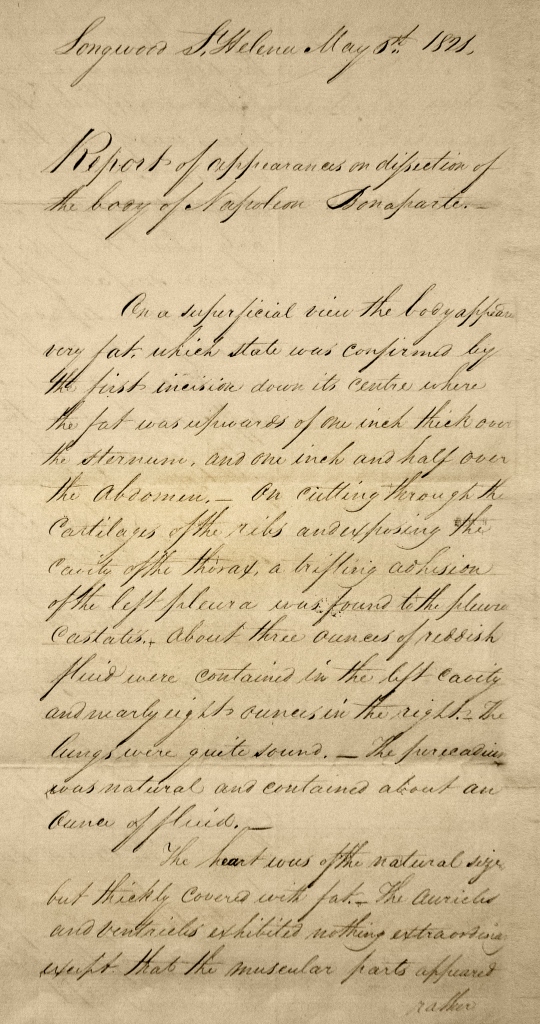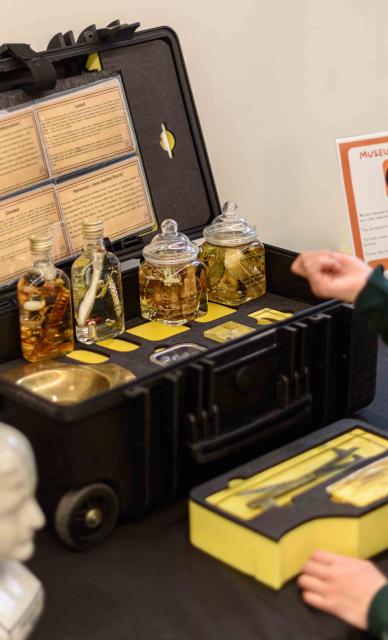Support us
As a charity we rely on your donations to fund our free exhibitions, school activities and online resources
Empowering medical excellence, shaping healthcare futures.
This surprising find was amongst the correspondence of John Abercrombie. Abercrombie was a popular doctor in early 19th century Edinburgh. His private means gave him the opportunity to pursue his academic interests and in 1828 he published 'Diseases of the Stomach, Intestinal Canal, the Liver and the other Viscera of the Abdomen'. It was probably because of his known interest in diseases of the stomach that an unknown friend or associate sent Abercrombie a copy of the post mortem.

The report was written from Longwood House, where Bonaparte had been kept since 1815, and is dated the day he died. The first comment in the report is on how fat Bonaparte’s body appeared and an inch and a half of fat was discovered over his abdomen. But that is not what killed him. The condition of his stomach is described:
‘The internal surface of the stomach to nearly its whole extent was a mass of cancerous disease or schirrous portions advancing to cancer’.
As if that wasn’t enough it was also discovered that he had a stomach ulcer big enough ‘to allow the passage of the little finger’.
The report is not signed. Lines have been left for signatures marked A, M and L for Antommarchi , who conducted the autopsy, possibly Montholon, a French general in exile with Napoloeon, and Hudson Lowe, the governor of St Helena.

Support us
As a charity we rely on your donations to fund our free exhibitions, school activities and online resources